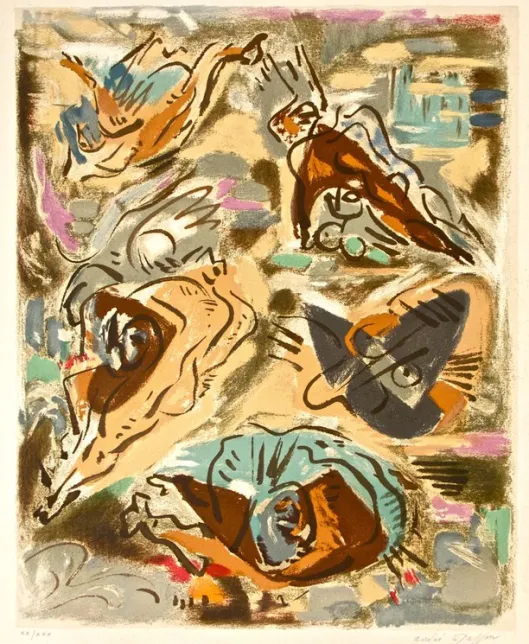In the early 1800s, lithography printmaking transformed the worlds of printing and art. Lithographic printing enticed many artists since it allowed for the creation of an original piece as well as its reproduction. But who invented it, when, and where? And how did it evolve into the form of artistic expression we know today?
What is Lithography Print?

The term lithography is derived from the Greek terms lithos, which means stone, and graphein, which means writing. Lithography, as the name implies, is a printing process that uses stone to engrave messages, images, or drawings on flat limestone. Lithography print, a novel process for its time, became the most effective reproduction technology at the beginning of the nineteenth century.
The pioneer of lithographic printing, Aloys Senefelder

The earliest attempts were made in 1796 by the German actor and writer Aloys Senefelder. He wanted to distribute his poems but couldn’t find a publisher and didn’t have the money to do so through traditional means. As a result, he decided to develop his own printing technology. It would be challenging for Senefelder, who had several failures before developing a successful chemical technique. He began by conducting several copper experiments. Then, using metal plates, he devised the typographic stereotype until he discovered limestone from Solnhofen, a town in southern Germany. This completely transformed the procedure.
The first lithographic prints were produced after years of research utilizing Solnhofen limestone, as a result of much effort and devotion. Aloys Senefelder ultimately patented his idea in 1799, and the lithographic print was born.

Following this, a drawing teacher named Mitterer expanded on Senefelder’s concept by adding the reel press. He created stunning replicas of pencil sketches. Several lithography workshops quickly sprang up in Munich, and many printers preferred this new technique. Lithographic printing grew in popularity as it was less difficult and less expensive than traditional stone engraving.
The French contribution to the spread of lithographic printmaking

It would only be a matter of time before the invention spread throughout Europe. It was known in London and Paris as early as 1801. It was made popular in France by Louis-François Lejeune, Frédéric André, and Aloys Senefelder’s nephew, Édouard Knecht. Charles Philibert de Lasteyrie, a Parisian printer, was also instrumental in its development. It was in France that the procedure was given the term “lithographie,” a name that will live on eternity!
The introduction of lithography into the art world

Following many technological advancements around 1825, the printing company Godefroy Engelmann would complete the establishment of lithographic printing’s prominence. It began to gain a foothold as an artistic medium through depictions of trips. Many artists embraced it, seducing not just the Impressionists, popular illustrators, and romantic painters. This only grew after Engelmann introduced color lithography in 1837. The 19th century saw the reign of lithographic art, from Manet to Braque, Matisse, Miro, and Mucha.
Despite many technological developments since then, lithographic printmaking remains a low-cost yet highly creative method. Artists can make a handmade and repeatable work of art by combining authenticity and printing. As a result, it also provides any art enthusiast with the opportunity to purchase an original work at a reasonable price. A quality that elevates printmaking to the level of painting or sculpture!











